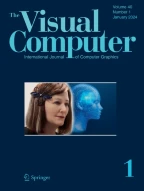Abstract
Computer simulation of human faces has been an active research area for a long time. However, it is less clear what the applications of facial animation (FA) will be. We have undertaken experiments on 190 subjects in order to explore the benefits of FA. Part of the experiment was aimed at exploring the objective benefits, i.e., to see if FA can help users to perform certain tasks better. The other part of the experiment was aimed at subjective benefits. At the same time comparison of different FA techniques was undertaken. We present the experiment design and the results. The results show that FA aids users in understanding spoken text in noisy conditions; that it can effectively make waiting times more acceptable to the user; and that it makes services more attractive to the users, particularly when they compare directly the same service with or without the FA.
Similar content being viewed by others
Explore related subjects
Discover the latest articles, news and stories from top researchers in related subjects.Author information
Authors and Affiliations
Rights and permissions
About this article
Cite this article
Pandzic, I., Ostermann, J. & Millen, D. User evaluation: Synthetic talking faces for interactive services. The Visual Computer 15, 330–340 (1999). https://doi.org/10.1007/s003710050182
Published:
Issue Date:
DOI: https://doi.org/10.1007/s003710050182
